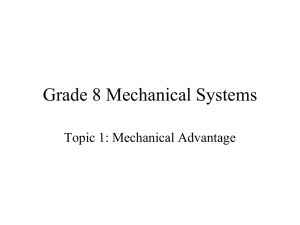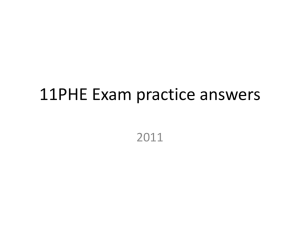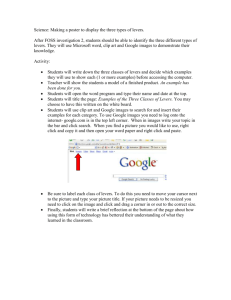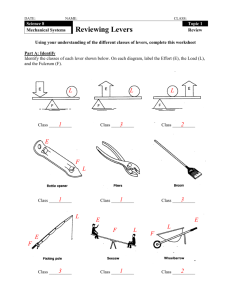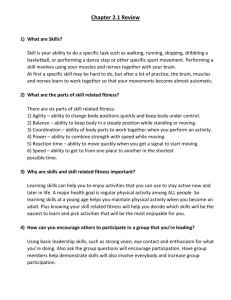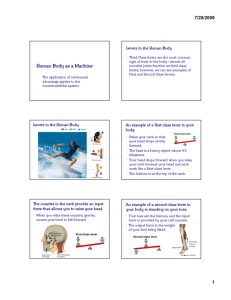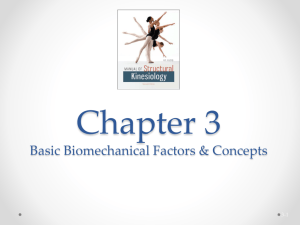Kinesiology
advertisement
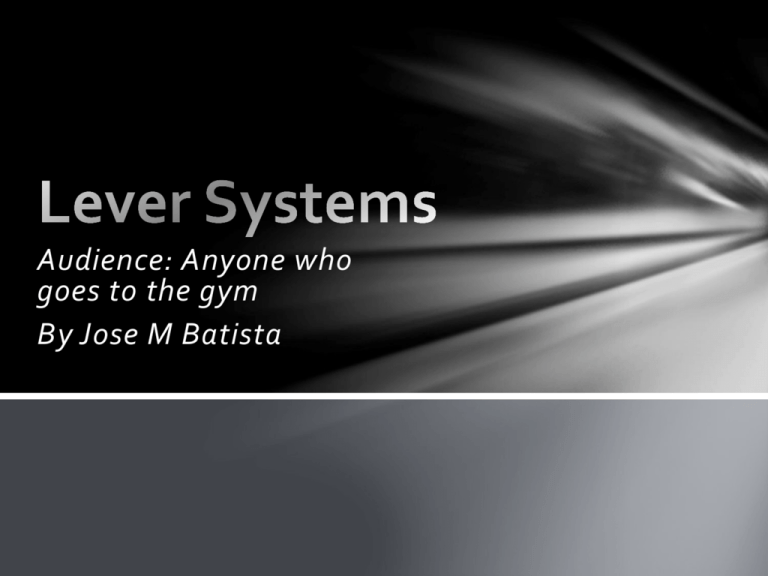
Audience: Anyone who goes to the gym By Jose M Batista What is it? Levers consist of • Fulcrum (Axis, joints) • Force (muscle pulling from tendon • Lever ( Long bone) • Resistance Advantage in Force Production • Less force is needed • Disadvantage in speed and ROM • Not as Far Advantage in motion and speed • Further and faster • Disadvantage in force • Harder to lift • Human movement Calculations Torque (moment)=force x moment arm With this equation we can calculate how much force do we need to move objects around. Breaking it Down There are three types of levers • First Class Levers • Second Class Levers • Third Class Levers First Class Levers • Axis is in the middle • Examples are see-saw and cutters • Advantage in force production • In the body (cervical extension) Example First Class Levers Second Class Levers • Force arm is longer than the resistance arm • Examples are wheelbarrow and nut cracker • In the body (plantar flexion) Example Second Class Levers Third Class Lever • Resistance arm is always longer than force arm • These are most used in the body Example Third Class Levers Length of Lever and Effect Body must create torque while objects create an opposite torque Weight of ball creates torque Resistance*moment or resistance arm Weight of ball*distance ball is from axis Practical Questions When lifting weights is it more advantages to have longer arms and legs or would it be a disadvantage and why? Longer arms means the resistance arm is going to create more force/torque. Would you expect 100 meter sprinters to be taller or shorter and why? Its advantageous for a longer stride but it’s a disadvantage as well because you need more force to move that leg. Why do you think kids going through puberty seem to run awkwardly? Their resistance arms are growing and its difficult for them to move each limb. Objects of Different Lengths Objects held in longer limbs travel a greater distance in a given time period and so can move with higher velocities and speeds. Tennis players can hit a tennis ball with more speed with a straight-arm drive than with a bent elbow because the lever is longer. Examples • Baseball pitchers, golf, football punter, etc. • Kids leg lengths in running. • Running speed (cycling rate) While they will need more force to move limb, they have a “mechanical advantage in speed and ROM”. Practical Questions What affect does choking up on the bat do and how does it affect hitting the ball? Talk about mechanics and why? Moving the axis will either make the lever longer or shorter letting you hit the ball further. Can a skilled lacrosse player shoot a ball faster with a defensive pole(72in.) or an attackers pole(42in.)? An attackers pole is easier to hit the ball because its moment arm is shorter. What affect does hitting a tennis serve have when you hit the ball at its highest point vs. at a lower point? When you hit the ball at its highest point it would be easier to cover more ground. How is it used in general? • We use levers for everything • Our muscles and bones act together to form a lever • We use levers to move things more efficiently • Levers can be used to increase movement Why is it important? • Strength advantage • Movement advantage • But not both • Able to pick up things • Move efficiently • Obtain better ROM Recap Careers using Lever Systems • Clinicians • Physical Education Teachers • Curriculum Developers • Athletic Trainers • Exercise Physiologists • Sport Psychologists Careers
